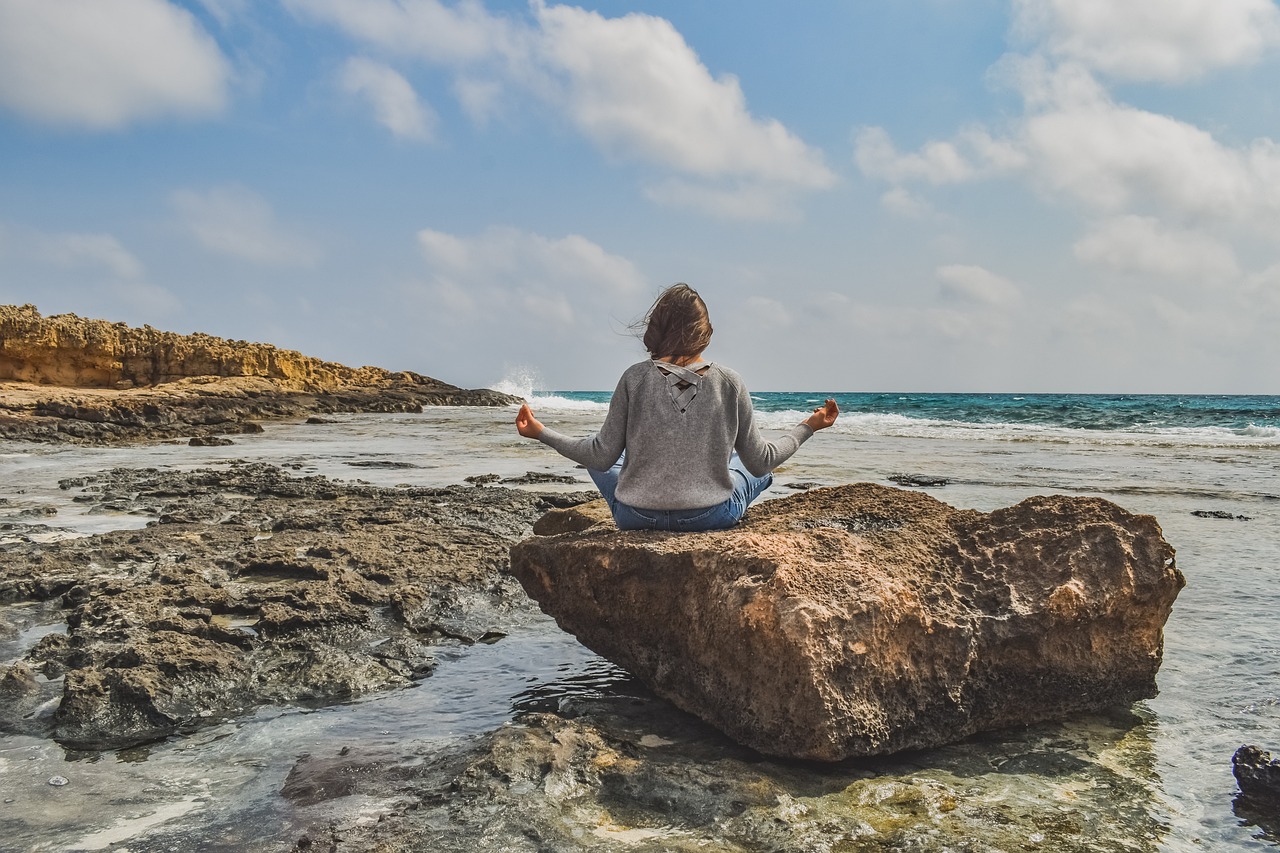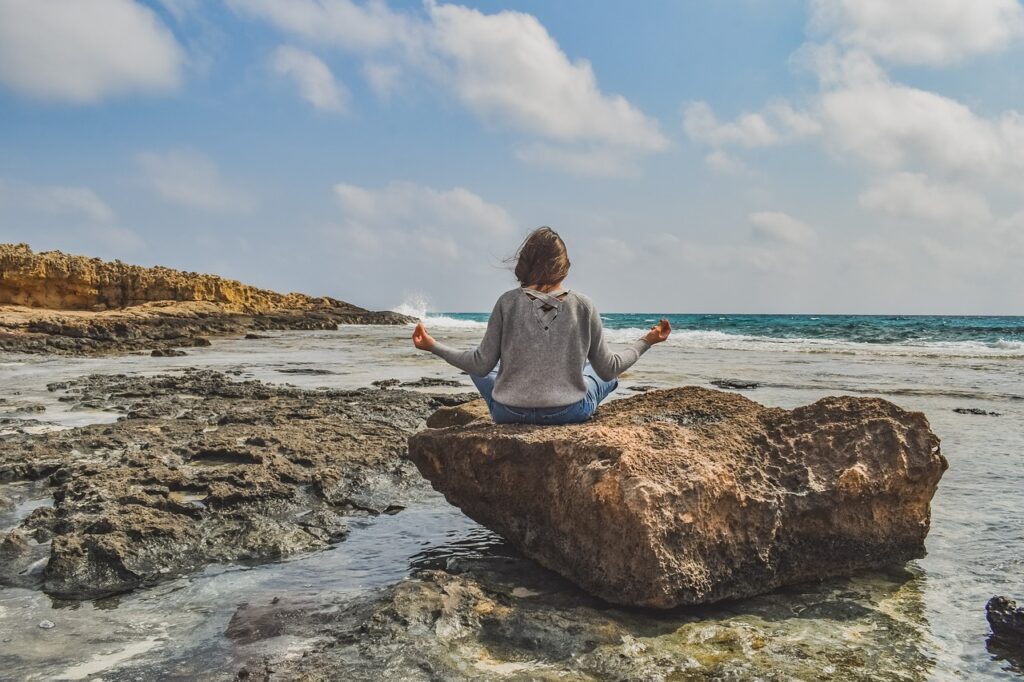
Mastering Yoga Poses: A Step-By-Step Guide
Are you looking to improve your flexibility, strengthen your body, and calm your mind? If so, practicing yoga could be just what you need. However, if you’re new to yoga, the various poses and techniques can seem daunting. That’s where a step-by-step guide to mastering yoga poses comes in handy.
In this article, you’ll learn about the benefits of yoga for both mind and body, as well as tips and tools to prepare for your practice. You’ll also get a breakdown of basic yoga poses and how to advance your practice by exploring challenging poses.
No matter your level or body type, this guide will also show you how to modify poses for your needs. By the end of this article, you’ll be equipped with the knowledge and confidence to take your yoga practice to the next level.
Understanding the Benefits of Yoga for Mind and Body
You’re going to love how yoga benefits both your mind and body! One of the main advantages of practicing yoga is that it helps you achieve mindfulness techniques. This means that you become more aware of your thoughts, emotions, and surroundings. By being present in the moment, you can free yourself from worries about the past or the future, and focus on the present. This can reduce stress levels, increase concentration, and improve your overall mental health.
Another benefit of yoga is that it helps you reduce stress. When you practice yoga, you engage in slow, deep breathing, which triggers the relaxation response in your body. This response slows down your heart rate and lowers your blood pressure, which can help you feel calmer and more relaxed. Additionally, yoga poses can help release tension in your muscles, which can also help you feel more relaxed.
By practicing yoga regularly, you can develop a more positive attitude towards life, and deal with stress in a more constructive way.
Preparing for Your Practice: Tips and Tools
Before starting your practice, it’s helpful to gather the necessary tools and create a comfortable space to enhance your yoga experience.
Firstly, you will need some basic yoga gear such as a yoga mat, comfortable clothing, and a water bottle. A good quality yoga mat is essential for providing a cushioning surface for your joints and maintaining a non-slip grip during poses. Comfortable clothing that is not too loose or too tight will allow you to move freely and focus on your practice. Lastly, it’s important to stay hydrated throughout your practice, so keep a water bottle nearby.
Creating a peaceful environment is also important to help you relax and focus during your practice. Find a quiet, clutter-free space where you can practice without distractions. You can also enhance your environment by adding some calming elements such as candles, essential oils, or relaxing music. Make sure the temperature is comfortable and adjust the lighting to create a calming ambiance.
By taking the time to gather your yoga gear and creating a peaceful environment, you will set yourself up for a more enjoyable and successful yoga practice.
Mastering Basic Yoga Poses for Improved Flexibility
To improve your flexibility and feel more confident in your practice, it’s helpful to start with some basic yoga moves that you can easily incorporate into your routine. These poses are perfect for beginners who want to build strength and flexibility while practicing yoga.
Some of the basic poses you can try include downward-facing dog, mountain pose, and child’s pose. It’s important to note that there are variations to each pose that you can try out as you progress in your practice.
However, it’s also crucial to avoid common mistakes when performing these poses. For example, avoid rounding your back in downward-facing dog and lifting your shoulders up to your ears in mountain pose.
By mastering these basic poses and avoiding common mistakes, you can improve your flexibility and build a strong foundation for your yoga practice.
Advancing Your Practice: Exploring Challenging Poses

Once you’ve built a strong foundation with basic yoga moves, it’s time to challenge yourself and explore more difficult poses. These advanced poses require more strength, balance, and flexibility, but with practice and dedication, you can master them.
Partner poses can also be a great way to deepen your practice and build trust with a friend or loved one.
Breath work is also an important aspect of advancing your yoga practice. As you move into these challenging poses, it’s important to stay calm and focused by taking deep breaths. This will help you stay present in the moment and avoid getting overwhelmed or frustrated.
Remember to listen to your body and only do what feels comfortable for you. With patience and persistence, you can achieve even the most difficult yoga poses and deepen your connection with yourself and others.
Modifying Poses for Different Levels and Body Types
When you’re practicing yoga, it’s important to remember that not everyone’s body is the same. That’s why modifying poses to fit your level and body type can be so beneficial. By doing so, you can make the practice more accessible and reduce the risk of injury.
One way to modify poses is to use accessibility options. For example, if you have trouble getting into a low lunge, you can use a block under your hand for support. Alternatively, you can use props like straps or blankets to make the pose more comfortable.
If you have an injury, you can modify poses to avoid putting pressure on the affected area. For example, if you have a knee injury, you can modify a lunge by keeping your back knee on the ground.
Remember, modifying poses is not a sign of weakness, it’s a way to honor your body and keep yourself safe while practicing yoga.
Frequently Asked Questions
How long does it take to see results from practicing yoga?
You can start to see progress in your yoga practice within a few weeks of incorporating it into your daily routine. Keeping track of your progress can help you stay motivated and continue to improve.
Can I do yoga if I have an injury or chronic pain?
You can do yoga even if you have an injury or chronic pain. There are injury modifications and pain management techniques that can help you practice safely and effectively. Always consult with a doctor or physical therapist before starting.
How often should I practice yoga to see maximum benefits?
To see maximum benefits, practice yoga at least 3-4 times per week. Track your progress by setting goals and measuring your success. Remember to listen to your body and rest when needed.
What should I wear or bring to a yoga class?
To a yoga class, bring a yoga mat and wear comfortable, breathable yoga clothing. Avoid clothing that is too loose or baggy as it can get in the way of your practice.
Can yoga help with weight loss?
Yoga can help with weight loss by boosting your metabolism and promoting mindfulness, leading to healthier food choices and increased physical activity. Yoga and metabolism, yoga and mindfulness: a discussion.
Conclusion
Congratulations, you’ve taken the first step towards mastering yoga poses!
By understanding the benefits of yoga for both your mind and body, preparing properly, and practicing basic poses, you’ve set yourself up for success in advancing your practice and exploring more challenging poses.
Remember to take it slow and listen to your body, modifying poses as necessary to suit your level and body type.
With dedication and regular practice, you’ll notice increased flexibility, strength, and a sense of calm and inner peace.
So keep up the good work and enjoy the journey towards mastering yoga poses! Namaste.

Comments (0)